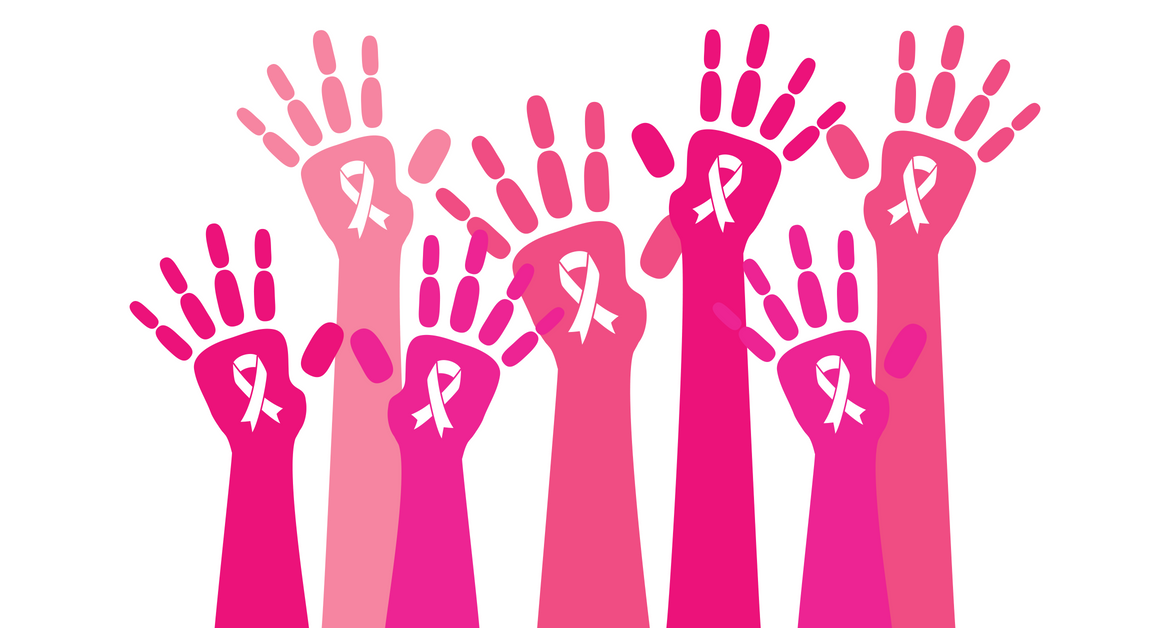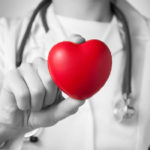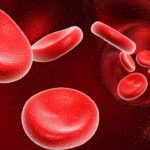Did you know that the first case of Breast Cancer was documented in Egypt around 1600 BC? It was found in an ancient script named ‘The Edwin Smith Papyrus’ in 1860 in an Egyptian tomb. The doctors attempting to treat cancer said that there was ‘no treatment’ to the perplexing disease. Alas! Glad we are now in the 21st century were it can be treated if detected earlier. However, Breast Cancer is also the most common cancer after skin cancer in women. So far so good, the death rate has declined tremendously due to awareness, screening and better treatment for this type of cancer.
What is Breast Cancer?
Breast cancer is a disease that occurs when there is a change in the cells of breast tissue, they keep reproducing and cluster together to form a tumor. When the abnormal tissues conquer other parts of the breasts or other areas of the body a tumor becomes cancerous. This spreads to the other areas of the body through bloodstream which is a network of vessels and nodes in the body that plays a role in fighting infection.
The breast cancer begins in the milk-producing glands of the breast called ‘Lobules’ or tube- shaped channels that carry milk from the lobules to the nipples. Much often, cancer starts in the fibrous and fatty connective tissue of the breast. Yet, new cases state that women are more prone to cancer, and about 100 times than in men. But, men can get cancer too.
What causes Breast Cancer?
A genetic mutation (is a permanent change in the DNA sequence) in the DNA of the breast cells cancer causes Breast cancer. The how’s and why’s of the damage isn’t entirely understood. As per research, some mutations develop randomly and some over the time, while others are inherited or outcome of lifestyle factors.
The prime factors that influence your breast cancer risk are mentioned below:
Family history
Especially for women, whose close relative like mother, sister, or a daughter with had cancer or are diagnosed with one, has double the risk of developing the disease.
Gender, Age, Race, and ethnicity
Breast cancer seems like a gender-biased disease for women, as they are prone to mount the risk after the age of 40 years and at the peak in their 70’s. It is also seen that white women are more likely to develop breast cancer as compared to Asian, Hispanic, and African American women. Though the African American women are more likely to develop more truculent breast cancer at a younger age and both African American and Hispanic women are more likely to die from breast cancer than white women.
Harmones
Women with the history of early menstrual periods (mostly before 12 years of age) and late menopause (after the age of 55 years) are at the risk of getting breast cancer. Scientists now think that longer exposure to the female hormone estrogen may be a factor, as estrogen stimulates the growth of the cells of the breast. The oral birth control pills have also linked to a small increase in breast cancer risk as compared to women who never used hormonal contraception. However, that risk could be temporary as than 10 years after stopping the pill, a woman’s breast cancer risk returns to average.
Menopausal hormone replacement
Scientists state that longer exposure to female estrogen may be the factor as it stimulates the growth of cells of the breast. A hormone therapy or Menopausal hormone replacement could is the most successful way to treat menopause symptoms which in turn will reduce chances of breast cancer in future.
Pregnancy
Having your first child after the age of 30 or having no children may increase your risk of breast cancer.
Breast cancer gene mutation
It is said that up to 10% of breast cancers are said to be inherited. Most of the breast cancer cases are due to defects in one or more genes, especially the BRCA1 or BRCA2 genes. For Example: In the US, the BRCA1 and BRCA2 mutations are more common in Jewish women of Eastern European descent. However, having these defective genes do not mean that you will get breast cancer, but the risk will be greater.
Weight
Though weight is the reason behind most of the diseases today. However, women who are overweight especially after menopause are more likely to get breast cancer. Being overweight will also pump the blood levels of insulin, which may further affect breast cancer risk.
Consumption of Alcohol
Studies recommend that women who drink alcoholic beverages everyday are 1.5 times more prone to develop breast cancer than the women who don’t drink. Higher the alcohol intake higher are the chances of other cancers too. Therefore, the American Cancer Society (ACS) suggests women stick to one drink a day–or less.
What are the signs/symptoms of breast cancer?
If you know that your breast looks and feels normal will help you recognize the signs and symptoms of breast cancer. Also, the Breast Cancer symptoms will always vary from person to person.
What will breast cancer feel like?
One can have breast cancer without feeling anything. However, it is vital to be aware of it and consult with a doctor if you find an area thickening breast tissue or a lump in your breast.
Early Signs/Symptoms of breast cancer
As observed there are no early signs of breast cancer, as there may be no effect of that on your body. In case you develop a lump, it may be too small to feel. And that’s how screening (it is a medical test or medical procedure for people who have no symptoms of a particular disease) comes into the picture using mammography. A lump in breast or armpit, with or without pain. The breast cancer symptoms in men and women are same. Since women are more prone to such diseases, the most common symptoms of breast cancer in women are…
- There could be change in the beast size or shape. It is better to check for any swelling thickening or shrinkage in one breast.
- Look for dimpling, redness or pitting. Your breast skin may appear like a color of an orange peel.
- The breast nipple might look inverted, turn inverted or flatten.
- There are also chances of discharge from nipple which may be clear or bloody.
Other possible breast cancer symptoms in women
- Pain in breast or nipple
- There may be nipple discharge (Other than breast milk)
- Swelling of all or part of a breast (even if no distinct lump is felt
Note: Some people may also think that having breast cancer will cause other symptoms apart from breast change like feeling tired, having less energy or weight loss. However, this is not the case, in case you notice a change, even if you feel well, it’s important to visit your doctor.
Types of Breast Cancer
It is essential to know the type of breast cancer so that the doctor can treat you with as early as possible with the best medication available. Breast cancer can be classified as below.
- The ‘in situ’ in which the breast cancer hasn’t spread to the surrounding tissues, thus making them treatable.
- The ‘invasive’, which can spread to the tissues very quickly.
- ‘Metastatic’ breast cancer is the one which has spread to the other parts of your body like bones, lungs, brain etc.
- And ‘recurrent’ breast cancer is the one that has returned.
The types would involve the below.
Invasive ductal carcinoma (IDC)
Ductal carcinoma in situ (DCIS)
Invasive lobular carcinoma (ILC)
Inflammatory breast cancer (IBC)
Paget disease of the breast (or the nipple)
Angiosarcoma of the breast
Metaplastic breast cancer
Stages of Breast Cancer
Stage 4
This stage is considered incurable. This means that the breast cancer has reached various parts of your body especially, liver, lungs, and brain.
Stage 3
It is considered to be an advanced stage. This stage is further categorized in stages like 3A, 3B, and 3C based on how big the tumor has reached.
Stage 2
At this stage, it is just growing, but only in the breast near the lymph nodes.
Stage 1
At this stage, it is invasive cancer and has spread outside the breast. It also has two categories like 1A and 1B.
Stage 0
This stage is also called the pre-cancer stage and is the earliest stage of breast cancer. It would involve abnormal cells which have not spread lobules where they began.
Screening and Diagnosis
With advanced science and technology, most of the diseases have medication or cure available to it today. But in most of the diseases like breast cancer ‘early detection’ is the key.
Screening for Breast Cancer
Screening mammogram ie, breast X-Ray will identify the presence of breast cancer if any and that too before the symptoms arise. However, an MRI can also be done to detect breast cancer. It is advisable the ‘National Comprehensive Cancer Network’ (an alliance of cancer centers) begin annual screening at the age of 40.
Diagnosing breast cancer
If the findings on the screening mammogram discover a lump or observe breast changes, it does not necessarily mean that one has breast cancer. The doctor will have to perform various tests to confirm the same and a biopsy that will state which area is the cause of concern
How can breast cancer be prevented?
There are no such guidelines or no can tell you how to prevent breast cancer. Although there is no guarantee, you can definitely lower the breast cancer risk. You can follow a healthy lifestyle by following things like…
- Curb your alcohol limit.
- Make your weight is under control.
- Keep yourself fit, therefore exercise.
- Breastfeeding your baby is important.
How is breast cancer treated?
Surgery, Radiation, chemotherapy and hormonal therapy are the treatments for breast cancer. The surgery and radiation will remove or destroy the cancer cell. Whereas systematic treatments such as hormonal therapy and chemotherapy will help in destroying and removing cancer.
What is pre-emptive surgery?
Women is considered high on risk if she has a strong family history of breast cancer. Therefore a surgery is performed on both the breasts where they are surgically removed. This is procedure is called as the bilateral prophylactic mastectomy or preventive mastectomy. The main aim of this surgery is to remove all breast tissue that could possibly remove breast cancer.
What is Prognosis?
Prognostic definition: Serving to predict the likely hood of a disease or medical condition. The prognosis is an estimate and outcome of a disease. It helps in knowing the probability of reoccurrence of breast cancer coming back along with life expectancy.
Prognosis of breast cancer
The factors for Prognosis of breast cancer include proliferative rate, axillary nodal status, steroid receptors, ploidy, and histopathology and oncogene amplification.
Psychological aspects of breast cancer
No doubt, a disease like breast cancer is considered like a major health problem in one’s lifetime. Most of the women who are treated for breast cancer are excellently informed about the details of diagnosis, prognosis and are increasingly involved decision making of their treatment along with family members and doctors. However, women who have been diagnosed with breast cancer may have chances of major depression or decrease in depression symptoms. They might experience a number of emotions like stress, fear, anxiety, about what the future holds, etc. Therefore, there is a need for comprehensive need and psyche and the physical body are interconnected.
Which makes the need for psychological support important amongst breast cancer patients.
Epidemiology of breast cancer
Breast cancer ranks number one among other cancers in the Indian females with age-adjusted rate as high as 25.8 per 100,000 women and mortality of 12.7 per 1, 00,000 women. The adjusted incident rate of Breast cancer in women from Delhi, Chennai, Bangalore, and Thiruvananthapuram was found high. Besides, young aged women are have been found at favorable and provide positive a clinical picture in the society and country.
Breast Cancer Pathophysiology
It is said that there are trillions of cell in the body and tightly regulate the cell cycle that controls their growth, death, maturity, and division. Throughout your childhood, the normal cells divide and grow faster which allows a person to grow. But once you reach adulthood the cells will divide to substitute the worn-out cells and repair injuries. With regards to cancer, it begins when a part of your body starts to grow out of proportionate.
With respect to breast cancer, it is a malignant tumor that starts in the cells of the breast which raises the risk of getting breast cancer. People with the family history of breast cancer have the highest chances of breast cancer.
What is Triple Negative Breast Cancer?
The Triple Negative Breast Cancer is the subtype of breast cancer and is generally diagnosed based on the presence or lack of three receptors. These three receptors are estrogen receptors, progesterone receptors and human epidermal growth factor receptor 2 (HER2).
However, none of these receptors are found in women in with triple negative breast cancer. To be precise the triple negative type of breast cancer can be aggressive depending on the stage of its diagnosis. And there are chances that this type of cancer is more likely to recur than other sub-types of cancer.
As per a study in the year 2007, more than 50,000 women will all stages of breast cancer found that 77% of women with triple-negative breast cancer survived at least 5 years against 93% of women with other types of breast cancer. Also, another study of more than 1,600 women produced in 2007 said that women diagnosed with triple-negative breast cancer had a higher risk of death within 5 years of diagnosis.
Treatment for Triple Negative Breast Cancer
The Triple Negative Breast cancer is typically responsive to chemotherapy and radiation therapy, and new treatments — such as PARP inhibitors — are showing promise.
Though, the researchers, drug developers, pharmaceutical companies, and breast cancer laboratory researchers are finding targeted therapies for these patients.
What is Pink Ribbon and what does it symbolize?
The Pink Ribbon is an international symbol of breast cancer awareness. The color pink is feminine and evokes traditional feminine gender roles like caring for people, being good and being corporative. There is also a foundation in the name of Pink Ribbon, which provides financial support in the UK to relieve the needs of people who are suffering from breast cancer.
The Cancer Council’s Pink Ribbon council aims to raise awareness about breast and gynecological cancers. Through Pink Ribbon cancer awareness programme, the council aims at raising funds for prevention programs, support services, and vital cancer research. The cancer awareness programme also aims at beating women’s cancers through prevention and education initiatives and raising awareness. All this while working towards a future where breast and gynecological cancers are manageable, treatable diseases.
The breast cancer culture
The breast cancer culture or the pink ribbon culture is the set of values, activities that surround and shape breast cancer in public. It should have dominant values like selflessness, cheerfulness, optimism etc. The breast cancer culture and pink ribbon honor the she-roes by selecting them based on the portion of misery they have experienced.
FAQ’s
- Does smoking cause breast cancer?
There is no doubt about it that smoking is the root cause of many types of cancers. However, as per latest research, it is confirmed that smoking contributes towards the risk of getting breast cancer.
- How often should I go to the doctor for a check-up?
One should visit your doctor for a physical check up every year which should include a clinical breast exam and pelvic exam.
- What is the impact of stress of breast cancer?
Many things alter your immune system. Traumatic events and losses can leave a bad impact on your immune function and cancer cells may have higher chances to establish I one’s body. Therefore stay away from stress and find ways to combat it as well.
- How often should women do a breast self-exam?
Checking your breast once a month will be good. One must look for changes in size, watch for any lumps, dimpling etc. If you find something unusual please consult a doctor as soon as possible. However, it is a good idea to know what’s normal for your breasts.
How to check breast cancer?
One can always take a breast self-exam. In many cases, lumps or thickenings, may not always be cancer. But visit a doctor is a must. Yet a self-exam is easy, one can follow these steps.
- In a well-lit room, stand undressed from the waist up in front of a large mirror. Look at your breasts, if they aren’t equal in size or shape, that’s OK! Most women’s breasts aren’t. So, with your arms relaxed by your sides, look for changes, in size, shape, position or breast skin changes.
- You can also place your hands on your hip and press down firmly to tighten the chest muscles beneath your breasts.
- Post that, bends forward towards the mirror and roll shoulders and elbows forward to tighten your chest muscles. In this way, your breast will fall forward and you can look for any changes in their shape or contour.
- Now, cling your hand behind your head and press your hands forward. Turn side to side and inspect your breasts outer portions. Do look at the border underneath them. You may need to lift your breasts with your hand to see it.
- Do check your nipples for any discharge fluid, place your thumb and forefinger on the tissue surrounding the nipple and pull outward toward the end of the nipple. Check for any discharge and repeat on the other breast.
- How can you prevent or reduce the chances of breast cancer?
Though breast cancer treatments have got better, yet there are ways through which you can lower the risk of breast cancer. There few tips which one can inculcate in their daily life like…
- Keep a track on your weight
Being overweight can increase the risk of many different cancers especially breast cancer in women after menopause. Thus, maintaining a healthy weight is important.
- To be active physically
Exercise is the key for good health. It is observed that women who are physically active at least for 30 minutes a day have an inferior risk of breast cancer.
- Eat fruits and vegetables daily
Along with being physically active, a healthy diet is also essential. The only way out is by eating lots of vegetables and fruits. Daily intake of them, will boost your immune system, thus lowering risk for any diseases.
- Don’t smoke and avoid too much of alcohol
We all know how unhealthy smoking is. Along with lowering quality of life, it also increases the risk of heart diseases and least 15 cancers – including breast cancer – it also causes smelly breath, bad teeth, and wrinkles. Studies have also shown that women who consume alcohol daily are at higher risk of breast cancer.










